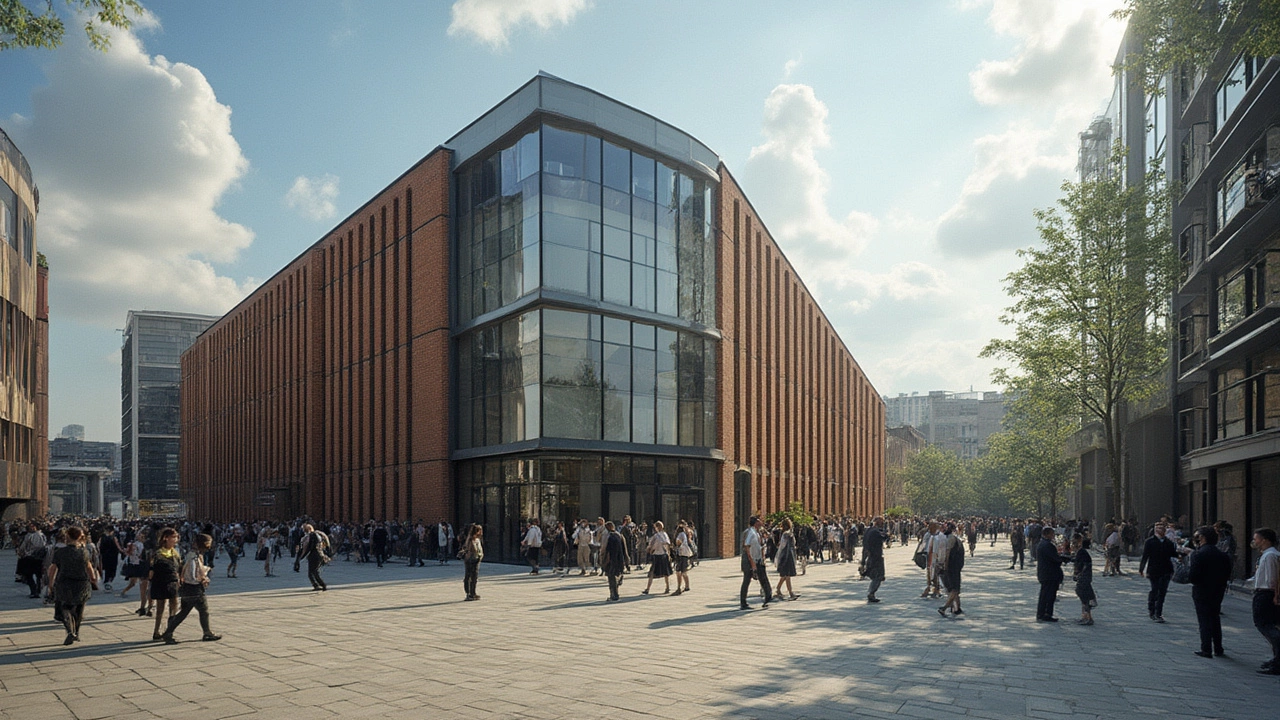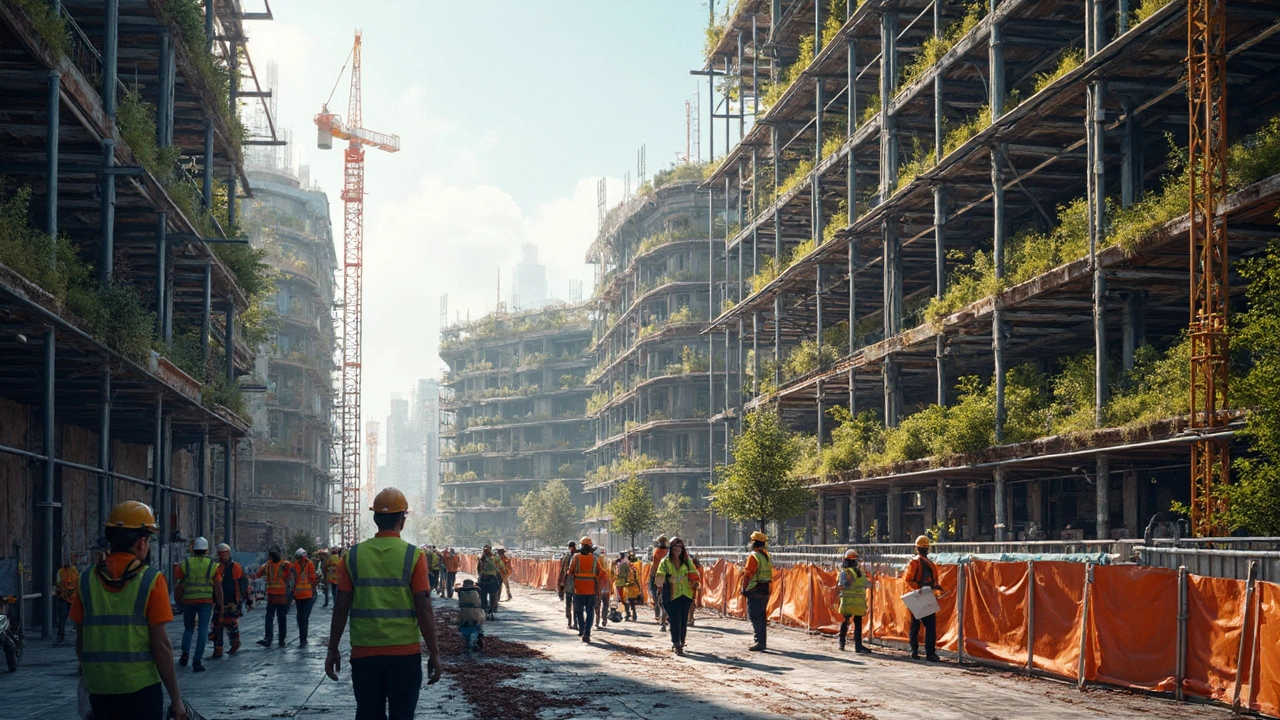Building Types and the Best Garage Door for Each
If you’re buying a house or planning a remodel, the type of building you have will shape the garage door you need. A wrong size or style can look out of place, cost extra, or even cause safety issues. Let’s break down the most common UK building types and show you which garage doors work best for each.
Detached and Semi‑Detached Homes
Detached houses and semi‑detached homes are the most common in suburbs. They usually have a single garage attached to the front or side of the property. Because you have the whole front façade to work with, you can choose a full‑width door (up to 4 m) that makes a strong visual statement. Steel or aluminium doors are popular here – they’re strong, low‑maintenance and can be painted to match the house colour. If the roof is pitched, a multi‑panel tilt‑and‑turn door fits neatly under the eaves without raising the ceiling height.
Look for a door with good insulation if the garage is heated or used as a workshop. A double‑leaf door gives easy access for larger vehicles and adds curb appeal. Many owners add side‑hinged or sliding doors for additional storage rooms.
Terraced, Row and Bungalow Properties
Terraced houses and row homes share walls on both sides, which limits how wide a garage door can be. Most of these homes have a single‑leaf door (around 2.5 m wide). A single‑panel or sectional door is the most space‑efficient because it slides upward and sits close to the ceiling.
Bungalows often have a front‑facing garage that sits lower than a two‑storey home. A low‑profile sectional door works well here, keeping the door line smooth with the house. Wood‑look aluminium doors add a traditional feel without the upkeep of real timber.
Because the side walls are shared, pay attention to fire‑rating requirements. Choose a door with an approved fire‑resistant core if the local council mandates it.
Apartments and Multi‑Storey Buildings
In blocks of flats, garages are usually either underground or in a separate basement level. Space is at a premium, so most owners opt for narrow roller doors (about 1.8 m wide). Roller doors slide up into the ceiling cavity and take up almost no floor space, which is perfect for tight car parks.
When the garage is underground, moisture resistance is key. Look for doors with sealed edges and rust‑proof hardware. Many property managers also require a CCTV intercom system, so choose a door that integrates easily with that tech.
Choosing Materials and Features
Across all building types, the material you pick influences price, durability and appearance. Steel is the toughest and most common, while aluminium offers lighter weight and rust resistance. Timber‑look doors are great for period properties but need regular upkeep.
Smart features like remote openers, battery backup and automatic timers add convenience for any home. If the garage is part of a security system, get a door with built‑in tamper alerts.
Finally, measure the opening twice – once from the floor to the ceiling and once from side to side – before you order. The right size saves you money on custom work and avoids delays.
Knowing your building type helps you pick a garage door that fits, looks good and lasts. Whether you have a sprawling detached house or a snug terraced home, there’s a door that meets your needs and budget.

Industrial vs Commercial Construction: Are They the Same?
Oct 9, 2025, Posted by Damon Blackwood
Explore the differences between industrial and commercial construction, covering purpose, regulations, costs, timelines, and how to pick the right contractor.
MORE
Is a School a Commercial or Industrial Building? Expert Guide to Classification
Jul 23, 2025, Posted by Damon Blackwood
Wondering if schools count as commercial or industrial buildings? Here's a clear take on their classification, purpose, and what it means for construction and regulations.
MORE
What is the Opposite of Commercial Construction? Breaking Down the Basics
Apr 21, 2025, Posted by Damon Blackwood
If you’ve ever wondered what stands on the other side of commercial construction, this article breaks it all down in clear terms. We’ll look at what makes commercial projects different from their opposite—residential construction—and why that matters. Discover how the aims, requirements, and day-to-day challenges compare. You’ll walk away knowing when a job is considered commercial or residential, and why these lines matter for budgets and building codes. Useful facts and straightforward tips are packed in for anyone curious about the construction world.
MORE
What Type of Construction Suits Your Commercial Structure?
Apr 4, 2025, Posted by Damon Blackwood
Choosing the right type of construction for a commercial building isn't just about aesthetics—it's essential for functionality and cost-efficiency. From steel frameworks to eco-friendly options, each type has its pros and cons. We'll break down different construction types and provide tips to help you make the best decision for your project. Stay informed and make the smartest choice for your commercial building needs.
MORE
Exploring the Differences: Commercial vs. Non-Residential Construction Explained
Nov 11, 2024, Posted by Damon Blackwood
Commercial and non-residential construction terms are often used interchangeably, yet they entail subtle differences essential for contractors, developers, and stakeholders to understand. This article unravels these nuances by examining what makes commercial construction unique, its legal and regulatory aspects, and how they differ from other non-residential projects. Discover interesting insights into various commercial structures like malls, office buildings, and warehouses, and learn practical tips for navigating these developments. Understanding these distinctions can enhance project execution and planning efficiency.
MORESEARCH HERE
Categories
TAGS
- foundation repair
- construction
- commercial construction
- new builds
- home improvement
- home renovation
- bathroom renovation
- construction materials
- home foundation
- renovation tips
- residential construction
- building types
- contractor
- foundation cracks
- home construction
- architectural services
- construction differences
- home inspection
- kitchen installation
- real estate